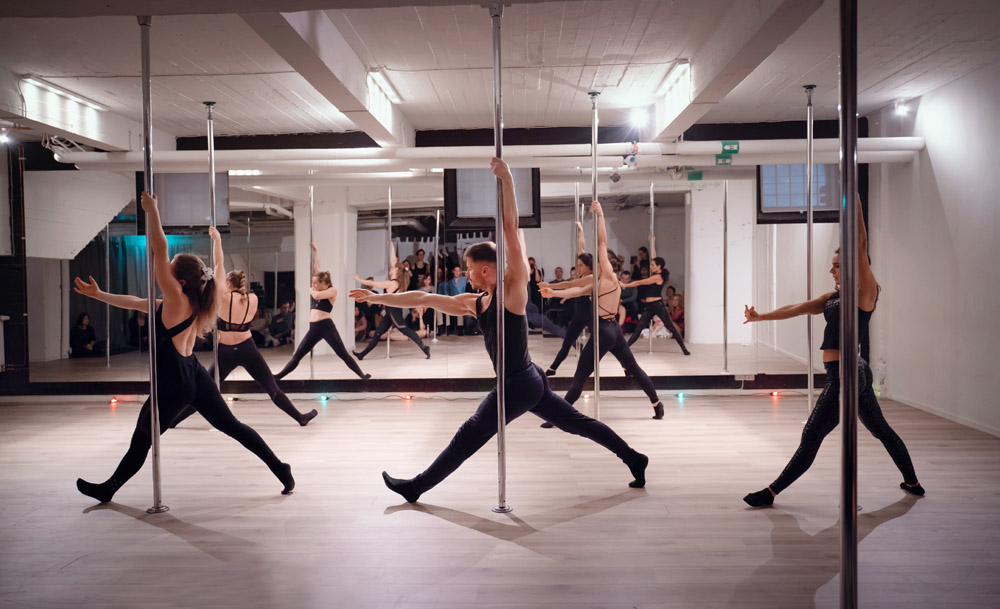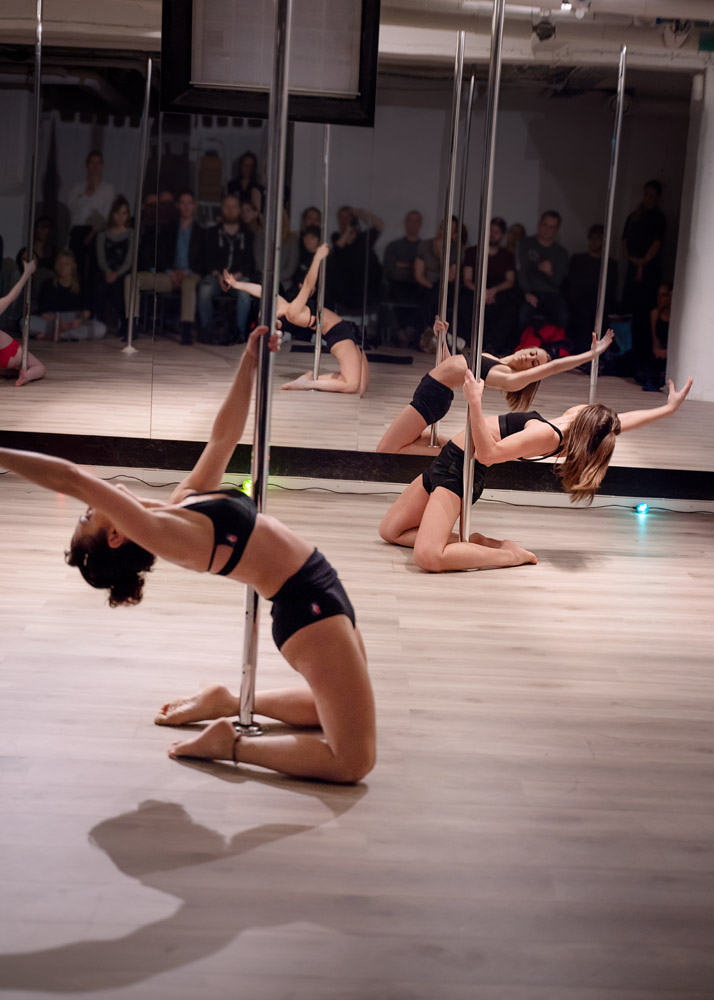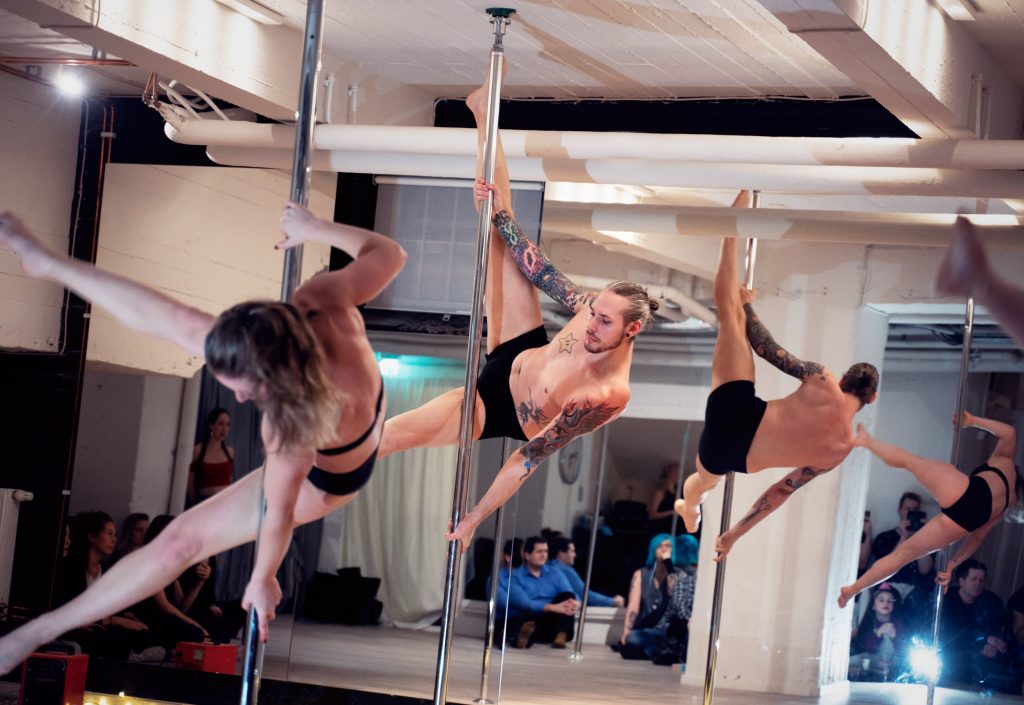15 tips for your first choreo as a beginners… Part 1
”Combo” is probably one of the most used words in the pole community. Think at any classes you take or at social media: linking together trick after tricks is a common practice. Combos are a good start for working on your choreography but can be very limiting thinking of choreography as a simple sequence of poses in the music.
In this short piece, we will try to give some tips on how to approach this challenging task.
North Pole Studio is in for challenging all the students this summer with a short choreo, so you can test some of these tips to win an amazing scholarship. More details about the challenge-scholarship will come soon!
There are several approaches to the creation of a choreography. For most of the dancers, it starts by choosing a song or developing a concept you want to perform. Before that, there is another question you need to ask yourself.

1. Who are you choreographing your routine for?
Are you working on a routine for yourself? Or are you doing it for a showcase? Or is it a competition?
All of the above and more are legit reasons to choreograph. Before going all-in, you need to figure out if there is a theme that you need to respect, or there are rules about the points and the duration of the song, or do you want to wear your heels, for example.
Once you know what you are in for, then the follow-up questions you should ask yourself are about what kind of energy you want to bring in it? Is it sensuality? Power? Elegance?
Think about the story you would like to tell or what feelings you would like to convey and express. It can guide you to the next step, picking your music.
2. Pick your music
Whether you already have an idea, or you know
some of the tricks you want to perform or vice versa, you have a blank canvas in front of you, you need a song for your choreo.
Get inspired by the different genres and playlists on Spotify, YouTube, Sound Cloud; they are all great tools to find ideas.
Pick a song, and move on it. Think about why and what you like about the song. Do you like the melody? Do you like the words? Or is it the beat that turns you on? Does it match with your theme? Or is it giving you ideas about your theme and the energy you want to convey to your audience?
The best song is a song that inspires you and makes you want to dance. If it feels too hard to dance on it, then it is probably a no-go song!
Have you decided? Remember that you can always modify a song or mix multiple songs if you don’t find what is best for you!
Once you have your song, listen to it a few times and try to map out the lyrics, the changes in tempo and feeling, or any standout elements in the music. This is a great help for the moment you are going to work through your routine.
When you chose a song, think that a slower song will give you more time to transit from a trick to another and won’t force you to rush to keep the pace. Also, just because the song is slow, it doesn’t mean that all the moves have to be. A fast combination can be effective after lots of slow movement.

3. How do you want your routine to feel like?
You have nailed down who you are choreographing your routine for, and you have a song.
The next step is thinking of the way you want your routine to feel like for your audience. How do you want to tell them your story? If the song has words, what actions can you use to emphasize the words you want the audience to focus on? Do you want to use (human) props to express yourself? And if you are using props, what can you use to emphasize your story as a whole? What moves can you use to make an impact on the audience, and when? Look at what you mapped out to have some guidelines about your song.
This brings us to our next tip, improvisation!
4. Creating by improvisation and playing
Improvising is an essential tool for any creative process. If you already have some ideas on which technical elements and combos to insert in the choreo, you can use the improvisation time to walk through the transitions. If you have no idea, it is a great way to feel where the music brings you.
We all have movement habits, and it is easy to let the muscle memory take over. To modify your preset patterns, it can be useful to set some rules for your improvisation, as we mentioned in our post on How to plan your Open Pole time to improve your skills and style.
Additionally, you can try adding visualization to your choreography, helping you to break movement habits. One example, imagine an object in front of you want to avoid or toss to the audience. The other idea, try to hold a scarf in our hands and dance with it while recording and then try to replicate the movements without having the scarf in your hands anymore. It will give you a completely different feeling of how your body can move.
Always remember that playing is a fundamental aspect of choreographing and any pole dance moment 🙂

5. Start from the beginning
As silly as this might sound, it can be easier to start choreographing your piece from the beginning of the song. You always have time to go back and change it if you are not satisfied with it.
6. You don’t need to show all your moves
If you are choreographing for a showcase or a competition, it is easy to jam-pack your routine with all the cool moves you can do. Many of us are just plain trixter, and we want to show everyone all the badass moves we know! So, one way to plan your song is choreographing moves to every musical change and beat, and putting in as much as you can. Sorry to tell you, but this will do you more harm than good. It will give no break to your audience, and all that impressive tricks will look very little impressive if one after the other. Additionally, you won’t have the time to enjoy your performance since your brain will be running from a combination to the next one without rest.
While we will talk more about how to create a nice transition in the next point, a nice guideline when planning your choreo can be following the 2-3-1 concept to pace your routine.
What is the 2-3-1 concept?
In the beginning, you should show your second best trick. In the middle, you should show your least impressive tricks. This is just the filler content: the least energy-intensive, yet it is what makes up the substance of the show and gives you the energy to prepare for the grand finale. In the end, you should show your showstopper. It is called that for a reason! This is the best trick you can perform, the most impressive – something that will make a boom!
Additionally, remember that in a full routine, there is no room for super hard moves that you can not do confidently yet. It is not a good idea to have them there since it will cause you more stress. Give space to more familiar combos and tricks, the quality, and the perfect polish will make you choreo just as amazing!
